-
Posts
2,105 -
Joined
-
Last visited
-
Days Won
11
Content Type
Profiles
Forums
Blogs
Gallery
Events
Store
Posts posted by QSAMIKE
-
-
Justin......
There are some early cap tallies made with Gold Wire the same as the trade badges and also as shown by Mervyn Gold Thread.....
Mike
0 -
THE WORCESTER REGIMENT
VOLUNTEER SERVICE COMPANY
SOUTH AFRICA 1900-1902
Full description of Jewel can be fond in Hibbard’s, Boer War Tribute Medals, item number A-28, page 79.
In his remarks he states that he had records of 2 different reverses for the 1st Contingent and that a 3rd reverse has been found. He also states that with the finding of the 3rd reverse there should be a 4th reverse for the 2nd contingent. The Jewel to 4400 Lance-Corporal J. Neal is a 4th reverse.
KNOW MEDALS AND TRIBUTE MEDALS
FIRST CONTINGENT: (137 Members All Ranks)
SECOND CONTINGENT (40 Members All Ranks)
Listed as: Name, Contingent, Medal Location, Jewel, Remarks
CAPT. CHECKETTS, F. 1st Contingent Regt. Museum NO
CAPT. WHITCOMBE, R.H. 1st Contingent S.A. Collection NO (1)
LIEUT. PARDOE, T.K. 1st Contingent Regt. Museum NO
SERGT. DARBY, J. (6693) 1st Contingent English Collection NO (2)
SERGT. MACKAY, W.S. (6696) 1st Contingent English Collection NO (3)
L.CPL. CURTIS, G. (6721) 1st Contingent Unknown YES (J)
L.CPL. NIEL, J. (4400) 2nd Contingent Canadian Coll. YES
PTE. ALBERTS, J. (6848) 1st Contingent Unknown YES (J)
PTE. CLISSETT, T. (6716) 1st Contingent English Collection NO (4)
PTE. CROWTHER, H. (6720) 1st Contingent English Collection YES
PTE. CUTHBERT, A. (6861) 2nd Contingent English Collection NO
PTE. DELVES, W. (6724) 1st Contingent Unknown YES (J)
PTE. DAVIS, T.F. (6872) 2nd Contingent English Collection NO
PTE. EVANS, E.T. (6730) 1st Contingent Regt. Museum NO
PTE. GITTENS, H. (6738) 1st Contingent English Collection NO
PTE. LANE, J. (6761) 1st Contingent English Collection NO
PTE. LEWIS, C. (6765) 1st Contingent English Collection YES
PTE. LONGMORE, G.A. (6767) 1st Contingent English Collection NO
PTE. MASON, C.H. (6878) 1st Contingent Unknown NO
PTE. MASON, S.W. (6875) 1st Contingent English Collection NO
PTE. NEASOM, F. 1st Contingent Unknown YES (J)
PTE. PERKS, F. (6870) 2nd Contingent Unknown YES (J)
PTE. RANDELL, W. (6788) 1st Contingent English Collection NO
PTE. STOCKDALL. W.H. (6794) 1st Contingent Regt. Museum NO (5)
PTE. TAYLOR, J.W. (6795) 1st Contingent English Collection NO
PTE. TONGUE, H. (6798) 1st Contingent English Collection NO
PTE. WELSH, A. (6835) 2nd Contingent Regt. Museum NO
REMARKS:
(J) Indicates Jewel Only
(1) Includes: D.S.O., W.W.1 TRIO, V.D., Bewdley Medal
(2) Includes: W.W.1 Trio, Edward VI Volunteer Long Service Medal
(3) Includes: Bewdley Medal
(4) Includes: W.W.1 Trio, T.E.M.
(5) Includes Edward VI, Volunteer Long Service Medal
As can be seen by the above out of a total of 177 medals and jewels awarded to the 1st Contingent and the 40 to the 2nd Contingent there are only 21 which are known to exist.
Medals Only: 19 Medals, 3 Medals and Jewel Pairs (2 - 1st Cont. 1 - 2nd Cont.) And 5 Jewels with no medals......
If there are any more out there please let me know.....
Mike




 0
0 -
Hi Pat......
I am pretty sure that these ar post WW2 cap badges, they use the same now only with the Queen's crown of course.....
Mike
0 -
Odulf - the French were proBoer and quite anti British in the Boer War. I have a collection of about 50 of the Petite Parisien from this period - it was their colour supplement. They picked out stories and had them illustrated in lurid style and with little regard for accuracy. They delighted in showing the British as aggressors and the drawings always showed them being beaten or, behaving badly. I have never heard of this 'execution' - and I cannot for a moment, think of a British Captain having his decks splattered with blood.
I will be interested to hear if Brett Hendy or, Will Endley have heard of this 'incident' - or, indeed from any member ?
Good Morning Mervyn.......
As soon as I read this I also tried to look up the incident and am afraid that I can not find and record of it happening.......
I think that this is just a bit of propaganda....
Mike
0 -
Gentlemen.......
I have been trying to find a photo but with no luck at this time of Leonard Birchall, the Savior of Ceylon, CD and Five Bars......
INTRODUCTION:
On 4 April 1942, only two days after arrival, Squadron Leader Birchall was the ocean to the south of Ceylon. Eight hours into the mission, ships were spotted on the horizon. Investigation revealed a large Japanese fleet, including five aircraft carriers, headed for Ceylon. Birchall's crew managed to send out a radio message, but was soon shot down. The Japanese still attacked but, but because of Birchall’s signal the British cleared the port and, inflicted significant losses on the Japanese.
After he is shot down he is taken to a Japanese POW camp where he is the senior Allied officer. He repeatedly stands up and demands better treatment for his men
For this he is severely beaten. His actions and leadership drops the death rate from over 30% down to almost nothing. One day he encounters a group of sick POWs working at the docks, and orders them to stop, for this he is beaten to near death and sent to a disciplinary camp where he continues to fight for better treatment.
Throughout the ordeal he maintains a diary, knowing that he would be executed if it is ever discovered. This diary is used as evidence in war trials following the war.
He continuesd to serve in the Canadian Forces after the war.
He is the only military member to receive 5 bars on this Canadian Forces Decoration for 62 years of service.
Mike
0 -
Hello Kano.....
I think that you will find that this is a miners helmet.....
Mike
1 -
Mervyn......
It reads in two lines.......
12th (THE PRINCE OF WALES'S ROYAL) LANCERS
HARRY PAYNE 1881
Mike
0 -
Good Evening Ladies and Gentlemen.....
Sorry this is not a print but an original......
Mike


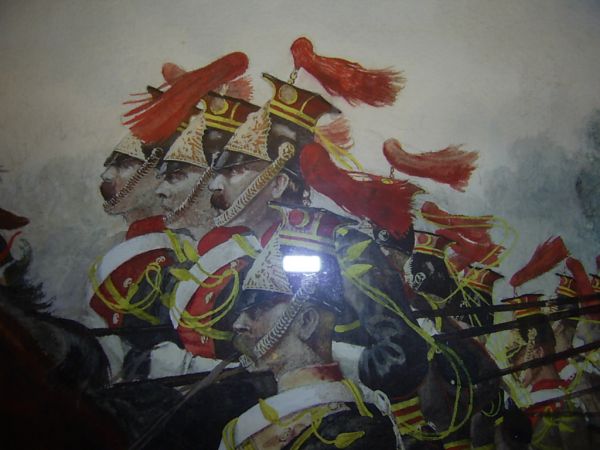 0
0 -
Good Morning Ladies and Gentlemen......
I an starting this posting with a medal for two reasons, I know that this is a medal / militaria forum and this is a mixture of both......
While at a garage sale some time ago I was going through a box full of costume jewelry and in the bottom of the box I spotted a medal ribbon.....
On pulling it out of the box attached to the ribbon I found the Canadian Centennial Medal......
I asked the seller what they wanted for it and was told $1.00 Canadian which I gladly paid.....
I was then informed that there were some certificates in the house that are about the man who was awarded the medal......
**********************************************
PART ONE (Picture One)
The first to be handed to me was the framed award certificate for the Canadian Centennial Medal, shown and described below.....
Surmounted by the Canadian Coat of Arms
On the occasion of the one hundredth anniversary
of the Confederation of Canada
the Centennial Medal is conferred on
Frank G. Ballachey, Esquire
In recognition of valuable service to the nation.
July 1st, 1967
************************************************
PART TWO (Picture Two).
The second frame that was given to me held a Letter from the then Prime Minister Brian Mulroney.......
Surmounted by the Canadian Coat of Arms
Prime Minister - Premier Ministre
Ottawa, K1A 0A2
November 29, 1985
Dear Mr. Ballachey
I am writing to thank you for your outstanding contributions to our country as a member of the Study Team on Culture and Communications Task Force on Program Review.
Your experience, dedication and leadership have contributed greatly to the study team. I know that my colleague, the Deputy Prime Minister, is most grateful for your volunteer contribution.
The decision of the Task Force Ministers to include both private and public sector individuals in their work is a welcome experiment in public administration. I am particularly grateful to you for so generously making your time available to the Government of Canada.
Again, thank you for your dedicated services to your country.
Yours Sincerely,
Brian Mulroney
Mr. Frank George Ballachey
Consultant,
F. Ballachey Associates Inc.,
Suite 310
90 Sparks Street
Ottawa, Ontario
K1P 5T6
There is also a small card.........
Deputy Prime Minister (Canadian Coat of Arms) Vice-premier ministre
In grateful appreciation
of your
dollar-a-year contribution
to Canada
And a Framed Dollar Bill......
**************************************************
PART THREE - (Picture Three)
I feel that this is the crowning piece, apart from the medal of course............
In the Upper Left is the Great Seal of Canada with the signature Alexander of Tunis
Below the seal....
(Signature Unable to read)
For Attorney General, Canada
CANADA
George the Sixth by the Grace of God of Great Britain, Ireland and the British Dominions beyond the Seas, King, Defender of the Faith.
To All and Singular to whom these Presents shall come,- Greetings
Whereas We have thought it necessary for encouraging Canadian citizens trading to China to appoint as Vice Consul of Canada at Shanghai China, to take care of Canadian citizens and to aid and assist them in all their lawful and mercantile concerns.
Now Know Ye that We reposing special trust and confidence in the discretion and faithfulness of Our Trusted and Well Beloved
Frank George Ballachey
Esquire have nominated and constituted and appointed, as We do by these Presents nominate, constitute and appoint him the said Frank George Ballachey to be a
Vice Consul of Canada in China
As aforesaid, hereby giving and granting unto him Full Power and Authority by all lawful means to aid and protect those Canadian citizens who may trade with or visit or reside within his Consular District, and to hold the said office during our pleasure with all rights, privileges and immunities thereunto appertaining.
And We do hereby strictly enjoin and require all Canadian citizens to take due notice of this Our Commission and yield obedience thereto.
In Testimony Whereof We have caused by these (Our) letters to be made patent and the Great Seal of Canada to be hereunto affixed.
Witness: Our Right and Trusted and Well beloved Cousin Harold Rupert Leofric George Viscount Alexander of Tunis, Knight of (Our) Most Noble (Order) of the Garter, Knight Grand Cross of (Our) Most Noble Order of the Bath, Knight Grand Cross of (Our) Most Distinguished (Order) of Saint Michael and Saint George, Companion of (Our) Most Exultant (Order) of the Star of India, Companion of (Our) Distinguished Service Order upon whom has been conferred the Decoration of the Military Cross, Field Marshall in (Our) Army, Governor General and Commander in Chief of Canada.
At (Our) Government House, in (Our) City of Ottawa, this third day of June in the year of (Our) Lord one thousand, nine hundred and forty-eight in the twelfth year of (Our) Reign.
By Command
Louis St. Laurent
Secretary of State for External Affairs
Recorded 14th July 1948
Liber 401, Folio 542
(Unable to read signature)
Acting Secretary of State of Canada
(Unable to read signature)
Deputy Registrar General of Canada
***********************************************
Most of the signatures have very badly faded as this Commission must have been left hanging in the sun.....
I again asked the seller what she wanted for all the pieces and was quoted a price which gave me change from a $20.00 bill....... To me it is a priceless piece of Canadian history especially when you think of what was happening in China in 1948 and onwards......
Mike
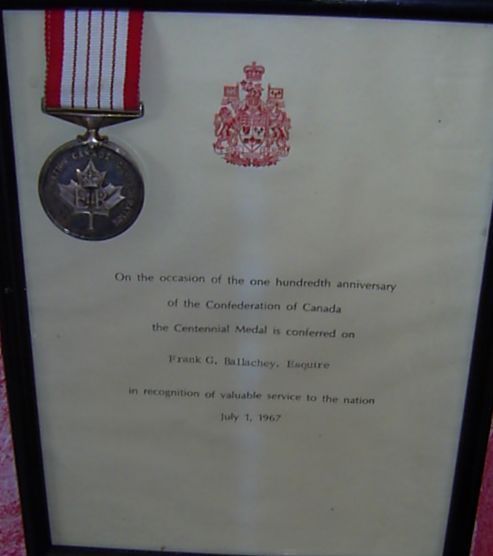
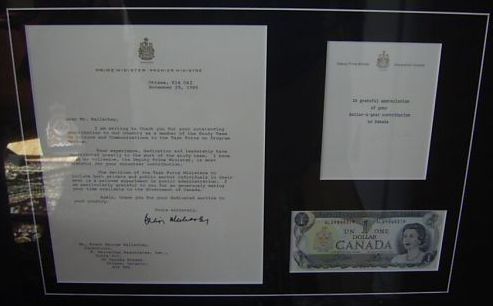
 0
0 -
Good Evening Ladies and Gentlemen......
Earlier today I was visiting a local coin and antique store and was shown an item that I knew a little about and I mean a little.......
I was shown what is proported to be one of the first military medals awarded by one of the early Roman Caesar's ....... That was purchased with a collection of Roman coins.....
There was an article in one of the military collectors journals published in the early to mid 1980’s it described how these were awarded to Roman Soldiers, Centurions etc. to be worn on their uniforms..... They are the circular discs that you see on the breast plates of roman soldiers and this article told about different types and how they were worn....... I remember reading it but cannot remember where......
My question is..... Does anyone remember what journal it was located..... I have a large number of journals from different societies and if I can find it I want to look up more information before I make an offer on it.......
Mike
0 -
Gentlemen......
I wish I had a photo of it but there was an official top bar for this medal...... Same sort of thing like the DSO with a pin.......
Mike
0 -
Chris - a wonderful addition to any collection - I dread to think what you had to pay. They have increased a lot in recent years. I wonder how many QSA Mike has tucked away ? I must ask him ?
Mervyn......
Chris beat me out by 2 minuets in ordering it.......... I cursed him and also wished him luck...... Especially with ALL the bars being confirmed........ What did he pay...... I will let him tell you...... How many do I have tucked away...... 2 - One to Town Guard and One to BSAP...... But I do have 3 Dated (little boast)........
Mike
0 -
Good Morning Ladies and Gentlemen......
And now for something completely different.......
Mike
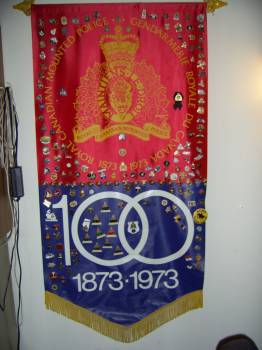
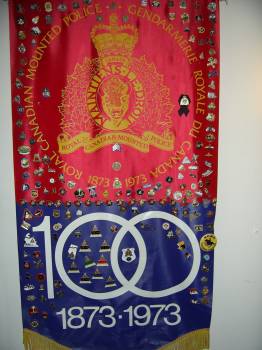
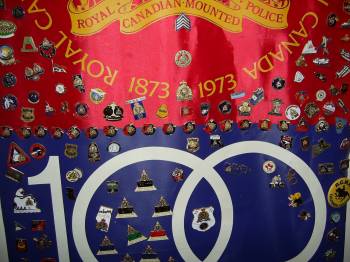
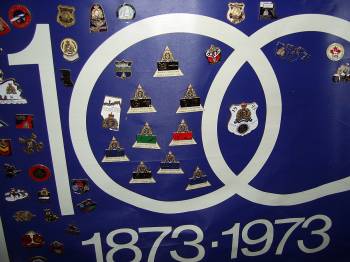 0
0 -
I would leave as is...... Could have been a member of a royal household staff...... See if there was a tour about that time.....
Mike
0 -
HOVELL, H. De B., (Hugh de Berdt)
RANK: MAJOR (On QSA)
REGT: WORCESTERSHIRE REGIMENT
BARS: CAPE COLONY
TRANSVAAL
WITTEBERGEN
REMARKS / HISTORY:
1. DISTINGUISHED SERVICE ORDER - VICTORIAN
2. KING'S SOUTH AFRICA MEDAL USUAL TWO BARS
3. CREATED A COMPANION OF THE DISTINGUISHED SERVICE ORDER [LONDON GAZETTE, 27 September 1901]: "HUGH DE BERDT HOVELL, MAJOR, WORCESTERSHIRE REGIMENT. IN RECOGNITION OF SERVICES DURING THE OPERATIONS IN SOUTH AFRICA". THE INSIGNIA WERE SENT TO THE GOC TRANSVAAL 15 November, 1902, AND WERE PRESENTED AT BLOEMFONTEIN 16 March, 1903.
4. COMMANDED - THE 1st BATTALION WORCESTERSHIRE REGIMENT FROM March 1907 to July 1908.
5. COMMANDED - THE 2nd BATTALION WORCESTERSHIRE REGIMENT FROM July 1908 to 1912
6. COMMANDED THE 13th BATTALION WORCESTERSHIRE REGIMENT FROM November 1914 to April 1915.
7. BIOGRAPHY:
Hugh De Berdt Hovell was born in Hackney, London in 1863, third son of Dennis De Berdt Hovell a Surgeon & General Practitioner, of Elstree Holt, Boreham, Hertfordshire, a family of ancient lineage. Hugh Hovell was educated at Winchester College, where he was a student of electricity, and the Royal Military College, Sandhurst, and commissioned in to the Worcestershire Regiment in 1884.
In his Who's Who entry, Hovell claims to have originated the use of telephones on rifle ranges (1886) and the use of field telephones (1888).
In 1892 he was awarded the Royal Humane Society's medal for rescuing, at great personal risk, a private soldier from drowning in a lake at Poona, in India.
During his early years as an officer he studied the welfare and comfort of his men and the best methods of making them efficient soldiers. In 1895, when a captain on leave from India from the 1st Battalion of the Worcestershire Regiment, he disguised himself as a private soldier and served as such with the 2nd Battalion of the Worcestershire Regiment through the New Forest manoeuvres. This was done simply with the object of learning the life, the duties, the difficulties, and the troubles of a soldier on service, so that when in the future he came to command men on active service he should be in a position to know through what his men were going, to appreciate their troubles, to help them through their difficulties, and to make them contented. In this way he felt that he could get the best out of his men, and the country the best value for its money.
He was the author of two manuals, "Soldiers' Shooting" (London: Gale & Polden, 1888) and " Soldiers' Training and Other Notes" (London: Gale & Polden, 1900).
As a Captain he was posted to the 2nd Battalion at Malta in 1896. He took command of "A" Company on the island of Gozo. He was a very strong swimmer and one of his feats was to swim round the island, comparable to swimming the Channel. Every man of his company had to be able to swim a mile, play water polo, march well, be a marksman, do semaphore and know the Morse code, as well as handle a pick and shovel efficiently.
At 5ft. 10ins. he was powerfully built with fine facial features; he had large, piercing eyes and a quiet cultured voice. He was abstemious in his habits—only drank ale and ate only one course, meat and vegetables, at dinner. He always smoked a clay pipe. He wrote a good hand and was expert on the typewriter.
He served with the 2nd Battalion Worcestershire Regiment throughout the South African War of 1899-1902, being mentioned in despatches and awarded an immediate D.S.O. for gallantry.
At the battle of Sligersfontein, 12th February, 1900, he took command and throughout the 24 hours he led the singing to keep the men cheerful. The song was " Oh ! Lucky Jim." During the South African war he had the heavy field glasses issued to companies replaced at his own expense by Zeiss binoculars, and bought for the scouts the Zeiss monocular.
When the South African War closed he was posted home as Second-in-command of the 4th Battalion.
Lieut.-Colonel Hugh De Berdt Hovell commanded the 1st Battalion Worcestershire Regiment at Portobello Barracks, Dublin, Ireland in 1907.
In 1908 he rejoined the 2nd Battalion to command it at Ahmednagar, India. His first effort was to abolish the physical drill and introduce the Muller system. All ranks joined in heartily and it produced a fine body of men. Next he set about eliminating V.D. He gave weekly talks to all ranks in the gymnasium, and insisted on every man having in his kit a packet of "Before and After." His efforts were rewarded by a clean bill of health.
The spine pad was the next thing to be abolished. This cumbersome piece of cloth had been worn for years in India. It weighed several pounds, and he substituted a two ounce strip of coloured linen, which he personally demonstrated and it was taken into use. Each company wore a different coloured strip.
He always encouraged singing on the march as he said it expanded the lungs and kept men fit. He also encouraged reading and wrote several books himself, his best known being " Duffers Drift."
His methods were always "in advance of the times." He first, as a company officer in India, instituted precautions for his men against disease. He started the idea of distinctive marks on his men's coats, so that after a charge and "mix up" the men could be quickly distinguished and re-formation of units carried out without delay. This was adopted generally throughout the Army in France. He trained every man of his company to know and use the semaphore code of signalling and to move noiselessly by night like Indian scouts. He specially trained his officers and men to use their own initiative, and though in 1914 he had long since given up command of his battalion, this training proved valuable at Gheluvelt, when the same battalion, through the individual initiative of officers and men, saved the situation, to the glory of the Worcester Regiment.
He completed his four years in command of the 2nd Battalion in 1912. The C-in-C. India came and inspected the battalion on parade. His remarks were :
"I have never in all my soldiering seen a finer and better set-up body of men ; your hospital is closed ; your men are free from venereal disease, and your general efficiency is excellent. That should be good enough for any battalion commander."
No notes about Colonel Hovell would be complete without mention of his bicycle. It was a specially strong machine and only he could ride it. He used it day and night, visiting the cookhouses and the institutes daily. He was nearly always present at the men's teas. He mounted and dismounted by the step and when dismounting from a horse he used to throw his right leg forward and jump off.
Hovell trained 2nd Battalion, according to his own account, 'on Sir John Moore's and Sir Charles Napier's methods of command'. His Who's Who entry attributes the success of the Worcesters' famous charge at Gheluvelt on 31st October 1914 to these training methods!
When First World War broke out in 1914 Hovell was on the retired list, but he soon found himself in command of the 13th (Reserve) Battalion Worcestershire Regiment, formed at Plymouth in November 1914. He also quickly found himself in trouble. His behaviour became the source of rumour among the rank and file, two of whom complained about him. The Times' account of the libel case, on 6th May 1920, reported that:
"Early in December, 1914, rumours were rife that private soldiers were making indecent suggestions about the conduct of the plaintiff, and these rumours continued. A court of inquiry was ordered, and of the two private soldiers who gave evidence one tried to commit suicide."
The President of the Court was Colonel Percy Holland. The conclusion of his report was as follows:
"The Court having most carefully considered the evidence brought before them are of opinion that although they do not consider there is any ground for specific charges such as suggested by the allegations made by Privates Fletcher and Baugh regarding Colonel Hovell, at the same time they are of opinion that Colonel Hovell is undoubtedly eccentric in his manner and methods in dealing with his men, and that these peculiarities of his in conjunction with the treatment rendered necessary to his back are liable to misconstruction."
As a result of the report, Hovell was removed from his command and returned to the retired list. He sought to retrieve his reputation and in 1915, at the age of 52, he enlisting secretly under an assumed name as a private soldier in his old battalion (2nd Battalion Worcestershire Regiment). He served with his 'old comrades' in France for five months until his health broke down.
In May 1920 Hovell's claim that Colonel Percy Holland had libelled him in the report of the inquiry came to trial. Holland's counsel, the Attorney-General, successfully argued that a Court of Inquiry was privileged and that Hovell had suffered no real harm, being stripped neither of his rank, nor his DSO, nor his pension. The judge found for the defendant with costs.
Lieutenant-Colonel Hugh De Berdt Hovell, D.S.O., died from broncho-pneumonia on the 27th November 1923, aged 60.
The Worcestershire Regiment history describes him as a remarkable soldier whose versatile eccentricity has inspired countless legends in the Regiment, he became known as "Mad Jack" . However, he was a gallant soldier and a true patriot.
FROM THE INTERNET I KNOW THERE IS DUPLICATION
Forgotten Lives of the Great War
Lieutenant-Colonel Hugh De Berdt Hovell DSO (1863-1923)
For some time now, as part of my research into the BEF's generals on the Western Front, I have been trying to discover why one of them, Percy Holland (1862-1931), was thrown out of the army and stripped of his CB in 1918. During this investigation I discovered that Holland had been the defendant in a libel case in 1920. I was rather hoping that the case might throw light on Holland's 'difficulties'. I was disappointed in this hope, but the case nevertheless revealed an interesting story.
The plaintiff was Lieutenant-Colonel Hugh De Berdt Hovell DSO (1863-1923). He was the third son of Dennis De Berdt Hovell, of Elstree Holt, Boreham, Hertfordshire, a family of ancient lineage. Hugh Hovell was educated at Winchester College and the Royal Military College, Sandhurst, and commissioned in the Worcestershire Regiment in 1884. In his rather boastful Who's Who entry, Hovell claims to have originated the use of telephones on rifle ranges (1886) and the use of field telephones (1888). In 1892 he was awarded the Royal Humane Society's medal for rescuing, at great personal risk, a private soldier from drowning in a lake at Poona, in India. He also won a DSO in the South African War, in which he served with 2nd Battalion Worcestershire Regiment. He commanded this battalion from March 1907 until March 1911. He was not quite 44 when he became CO, on the young side for a pre-war battalion commander. Hovell trained 2nd Battalion, according to his own account, 'on Sir John Moore's and Sir Charles Napier's methods of command'. His Who's Who entry attributes the success of the Worcesters' famous charge at Gheluvelt on 31 October 1914 to these training methods!
When the European War broke out Hovell was on the retired list, but he soon found himself in command of the 13th (Reserve) Battalion Worcestershire Regiment, formed at Plymouth in November 1914. He also quickly found himself in trouble. His behaviour became the source of rumour among the rank and file, two of whom complained about him. The Times' account of the libel case, on 6 May 1920, reported that:
Early in December, 1914, rumours were rife that private soldiers were making indecent suggestions about the conduct of the plaintiff, and these rumours continued. A court of inquiry was ordered, and of the two private soldiers who gave evidence one tried to commit suicide.
The President of the Court was Colonel Percy Holland. The conclusion of his report was as follows:
The Court having most carefully considered the evidence brought before them are of opinion that although they do not consider there is any ground for specific charges such as suggested by the allegations made by Privates Fletcher and Baugh regarding Colonel Hovell, at the same time they are of opinion that Colonel Hovell is undoubtedly eccentric in his manner and methods in dealing with his men, and that these peculiarities of his in conjunction with the treatment rendered necessary to his back are liable to misconstruction.
As a result of the report, Hovell was removed from his command and returned to the retired list. He sought to retrieve his reputation by enlisting as a private soldier in his old battalion - at the age of 52. He served with his 'old comrades' in France for five months until his health broke down.
In May 1920 Hovell's claim that Holland had libelled him in the report of the inquiry came to trial. Holland's counsel, the Attorney-General, successfully argued that a Court of Inquiry was privileged and that Hovell had suffered no real harm, being stripped neither of his rank, nor his DSO, nor his pension. The judge found for the defendant with costs.
Hovell was the author of the manuals, Soldiers' Shooting (London: Gale & Polden, 1888) and Soldiers' Training and Other Notes (London: Gale & Polden, 1900).
The Worcestershire Regiment history describes him as 'a remarkable soldier whose versatile eccentricity has inspired countless legends in the Regiment'.
Hovell died in November 1923 from broncho-pneumonia, aged 60.
##########################################
I wish I knew where the Life Saving Medal and the WW1 medals were located any ideas.
Pictures to follow.
Mike
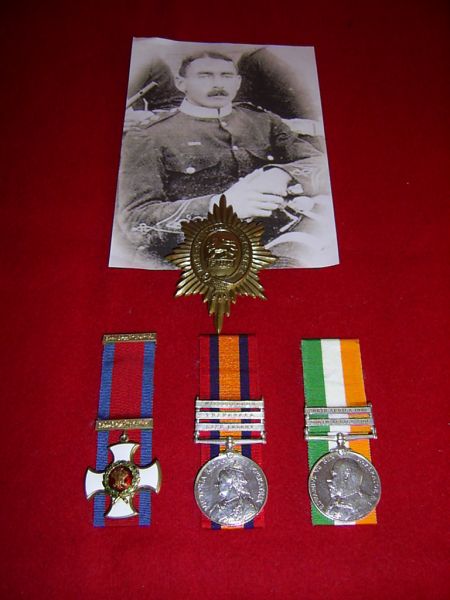
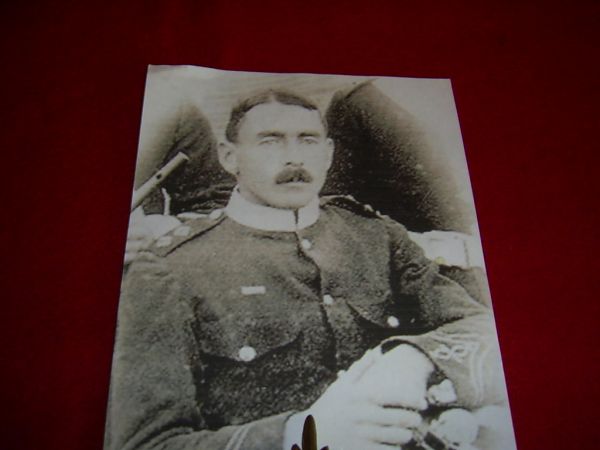 0
0 -
I think that I am going to have to go down to the display and dig them out again and take some new photos.......
Mike
OK will edit....... Just took some new pictures.......
The two on the left are supposed to be Mauser and the two on the right .303...... Along with the bottoms, note the Mauser is dated 1896.........
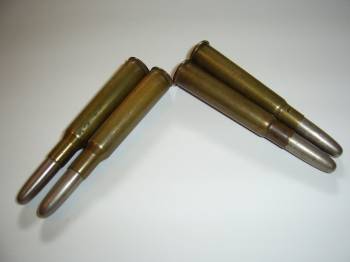

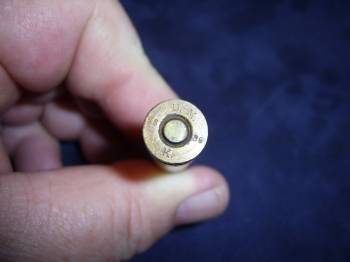
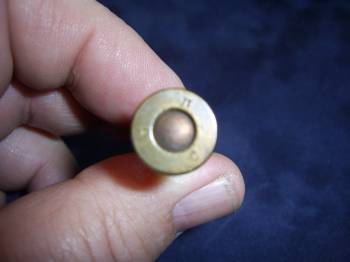 0
0 -
Here are a few more pictures.......
Mike
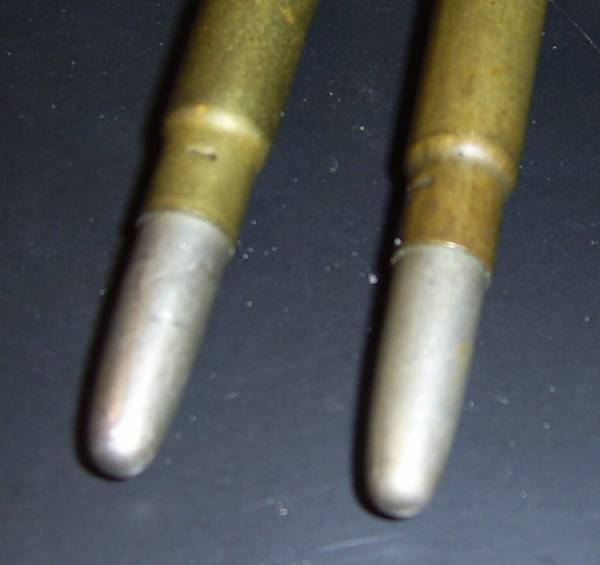
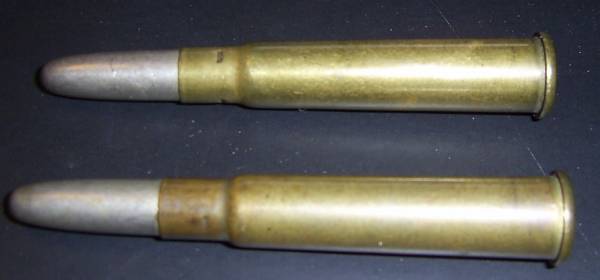
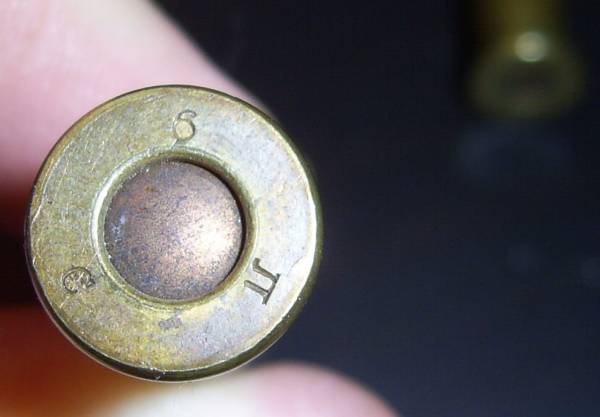 0
0 -
Good Morning Ladies and Gentlemen.....
This has just shown up in an auction:..........
Mike
Auction Sale City Coins, to be held July 24th 2011
Lot - 719. Commemorative Medallion of the Scandinavian Corps : Magersfontein 1899 (unlisted in HH or AM) est. VF+ R15.000 R20.000
Engraved in upper case on rim: " Sune Lindström vilken komponerat denna jetong"
This extremely rare item is not recorded in HH or AM (patinated brass, 92mm, some discoloration, in damaged circular box of issue)
At Magersfontein, on 11 December 1899, fifty men from 4 Nordic Countries (Sweden, Denmark, Norway and Finland) fought for the Boer cause under the common name "Corps". 41 of them were killed or wounded in the intense fighting. 25 years later, Maj-Gen. Gustav Lindström, Chairman of the Stockholm Rifle Association, propagated the idea of a medallion and a tri-annual shooting contest between the four countries to commemorate the heroic stand of the Scandinavian Corps. His son, the architect Sune Lindström, designed the medallion and the first contest took place in Helsinki in 1925.
According to the rules of the competition, the story of the Scandinavians at Magersfontein had to be specifically mentioned when the trophy was handed to the winning team. The medallion was given as a separate prize to the highest-scoring member of the winning team.
obv:
A Viking ship on a rough sea with a bright star above the horizon. Underneath: " kunde icke vika blott falla kunde de" which can be freely translated as: " could not give way; they could only fall"
rev:
A cross, as is found on the national flags of the four Scandinavian countries, divides the area in four equal parts: these quarters contain the heraldic emblems of the four nations. Around the circumference: " minnet av den Skandinaviska Kårens strid vid Magersfontein 1899", freely translated as " memory of the Scandinavian Corps' battle at Magersfontein, 1899". At the bottom " 25"
The late Dr. H.M. Stoker mentioned in an article in De Nummis No 3, 1960 that between 1925 and 1960 a total of 29 medallions were struck. Of these, two were in silver and 27 in brass. One of the silver examples was presented to " Lord Baden Powell… from admiring Scandinavians" on 7 Aug. 1935.
Four brass examples (probably unnamed) went to unknown collectors and named examples are known to Gen. Jan Smuts, Advocate Oswald Pirow and Dr .S.N.F. Gie (the last two for their part in facilitating the award of five DTDs and 34 ABOs to Scandinavians in 1936/37).
Sold in original pale blue plush lined circular cardboard box, which is slightly damaged.
0 -
I was referring to the rimmed rounds in post number 5. All of the ones in that post appear to be rimmed rounds, not rimless. The model 1895 7mm Mauser made for Spain used rimless 7x55mm ammunition. That indicates the rimmed rounds seen in post #5 are not Mauser military rounds.
I am not questioning where or when the rounds were found. I would caution against assuming something found at a battlefield location, dates to the specific time period of the battle. To use an analogy Mervyn would quickly understand, is the presence of a fingerprint can be used to show that someone was present in a specific location, but not necessarily when with absolute certainty. In the context of ammunition found at a Boer War battlefield, well over a century has passed, and no one can be certain in the intervening years since then and now, that the local land owner or someone else wasn't hunting or shooting on the land either to protect his flocks/herd, target practice on a dassie (a Hyrax or rock rabbit), etc.
Hi again Les.....
I understand what you mean by when and where...... The only thing that I can go by is the letter where they are mentioned and the post mark on the cover..... The man who wrote the letter was a few months later Killed in Action.......
Mike
0 -
Hi Les.....
Take a look at this thread, it is where I obtained the rounds.....
Mike
0 -
Here are a couple of Mauser Rounds and DumDum's.......
The photo of the base is from one of the DumDum rounds.....
Mike
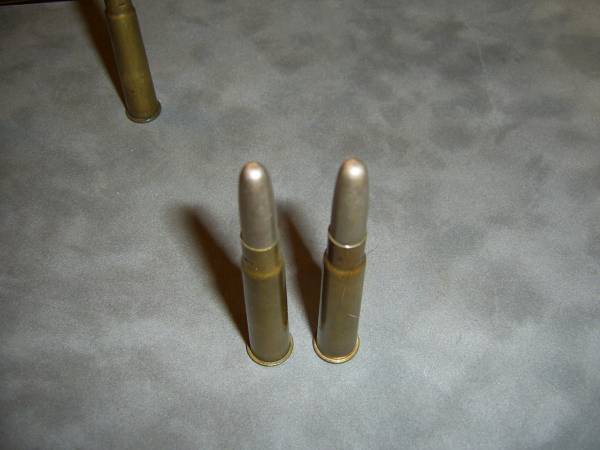
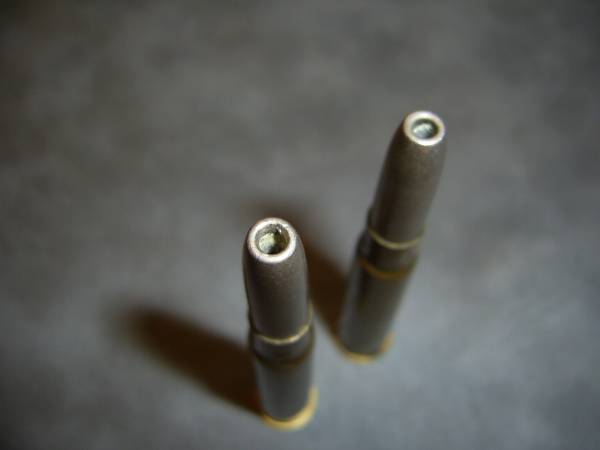
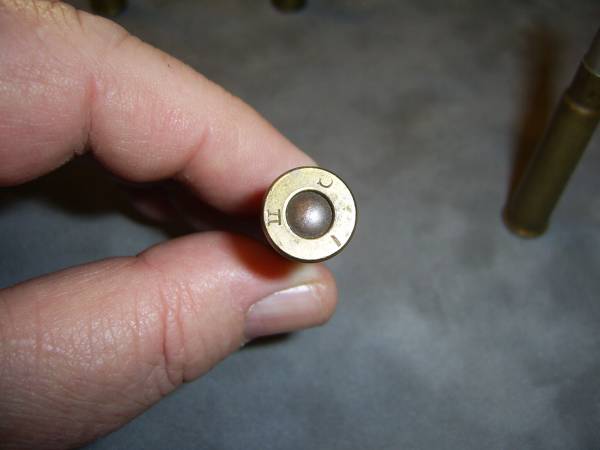 0
0 -
I have put this here because he was gallant in many ways even though he did not get a medal......
Here's one outstanding Marine:
A British soldier killed by a Taliban bomb in Afghanistan left $161,500 in his will -- so his friends could go on vacation to Las Vegas, The Sun reported Monday.
Royal Marine David Hart, who had taken out a $403,800 life insurance policy before he was deployed to Afghanistan, stipulated in a letter that in the event of his death, his friends and their partners should travel to Sin City for a massive party in his memory.
"In his letter David said he had had a great life and had no regrets about anything. He always said he would do something like this if something bad happened," friend Andy Hare said. "He said, 'Go and have a good time and spend all this money.'"
Now, one year after 23-year-old Hart's death, 32 friends will fly to Nevada to honor his final wishes.
Hart, a combat medic, also set aside money for his family as well as $80,700 for a charity for wounded Marines.
"He was the best brother I could have wished for," Sarah Hart, 27, told the newspaper. "He was caring, funny and had an infamous grin. He would always be there for you. I'm proud to have been his sister and of his career as a commando."
Lt. Col. Paul James characterized Hart as the "perfect Marine -- magnificent and in personality and profession."
0 -
Good Evening Gentlemen........
The original design of the ribbon for the Inter-Allied Victory Medal.......
From an old ribbon chart and have seen a picture or two with people wearing it.....
Mike
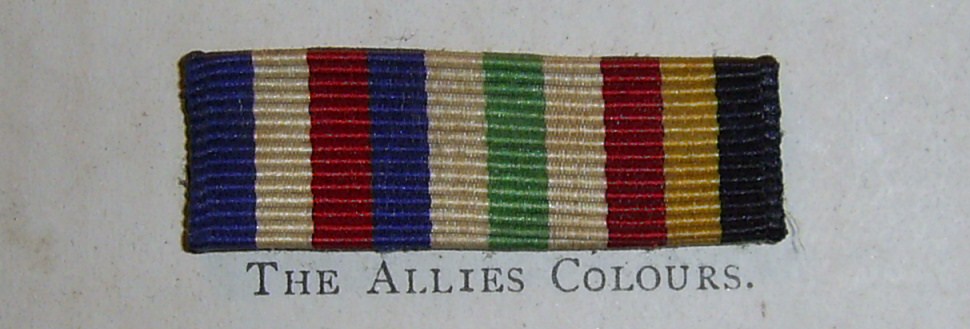 0
0 -
The two Nesbitts Horse medals in my collection are both impressed naming in the official style......
Mike
0




English 1914 star
in Great Britain: Orders, Gallantry, Campaign Medals
Posted
Can you please show some pictures as I have never heard of a Non-British person being given the 1914 Star........
I have gone through the new book "Great War Medal Collectors Companion" which gives a list of all units that were awarded the 1914 star and they are all Bristish Empire troops......
Mike